
HORIST: Public opinion polls are much ado about nothing
There are two ways to analyze the meaning of polls – if, indeed, they have any real meaning other than fodder for news reports. The first is the simple superficial reading – the amateur version. Then there are the analyses conducted by the pros – the people who want to know how the public will vote in November.
The recent Gallup poll is a good example of the two versions of analysis. It asked respondents to prioritize the issues they consider to be the most important PROBLEMS. “Problems” is emphasized for reasons that will be explained below. But for now, here are the results.
Immigration (22%); dissatisfaction with government (19%); race relations (7%); lack of respect (6%); Economy (4%); healthcare (3%); and family values and morals (3%).
In terms of political intelligence useful in forming campaign strategies, this overview is useless. Even the data behind these numbers have very little value to campaign consultants and advisors. Reports on this poll do not indicate whether the target audience were all adults, registered voters or likely voters. That makes a huge difference when looking at the data from a professional political viewpoint.
This poll does not indicate the intensity of the opinion. By the time you get down to single digits, do the respondents really give a damn – at least sufficiently enough to vote that issue? Probably not.
Only 4 percent of the respondents saw the economy as an important issue. Is that bad news for the GOP, as Democrats and the biased media will undoubtedly claim? But, the question asked the biggest “problems.” The low response on the economy is just as likely an endorsement of the Trump policies. The people do not see the economy as a “problem.”
That does not mean that the economy will not be the number one consideration in the polling booth. This point is reinforced by the fact that other polls have put Trump’s handling of the economy in the 60 percent favorable range – 15 points higher than his personal popularity. So, will voters vote the economy or the personality? That is the critical information that most polls do not reveal – and neither does this one.
The media will spin their interpretations along partisan lines – and they can do that because there is nothing definitive in the statistics. The media is not likely to dig into the details to see if there are a few pearls of wisdom.
Looking at the numbers alone, Republicans are going to see good news with immigration at the top. Democrats will note that dissatisfaction with government is right up there, and racism is number three. Of some significance is the fact that the Russian investigation does not even make the list. It registered in the asterisk range.
The problem with all of that is that the poll does not reveal what the public thinks about those problems, and even more importantly who they blame. Immigration is now trending as the top
“problem,” but it could be driven to the top by Democrats who hate the Trump policies combined with Republicans who love them. That critical information is not discernible in these superficial news reports. The fact that a greater percentage of Republicans see immigration as a “problem” – as seen a bit deeper down in the data — does give some indication that it is an advantage to the GOP.
“Dissatisfaction with government” has the same problem. It does not tell us who the public blames. In 2014, the polls showed a high degree of dissatisfaction with Congress. Democrats said it was because of Republican House obstructionism. Republicans said it was because of Democrat’s actions in the Senate. The Republicans were correct, and the voters turned over control of the Senate to the GOP in that year.
The current question promotes the same assumptions, but in fact, it does not tell us if the public is unhappy with Republican leadership of the House and Senate or do they still dislike the Democrat Schumer/Pelosi leadership.
“Family values and morality” only garnered 3 percent. That may explain why people like Bill Clinton and President Trump are not fatally wounded politically by the rash of personal scandals. That is not new to the American political culture. Ted Kennedy, Barney Frank and Gerry Studds all survived major scandals and continued in their public service – often to high acclaim. Since 3 percent is within the margin of error, it is entirely possible that no one cares about family values and personal morality in terms of political decision-making.
The absence of the Russian investigation and the low rating on the morals issues might have some analytical meaning. They should be a red flag for the anti-Trump media since those two issues take up the VAST majority of the air time and print space with the elite east coast media. You can understand the left’s frustration when with all the one-sided hammering they do on those two issues, it does not move the needle. That may also explain why FOX News has a bigger audience than CNN and MSNBC combined. Ratings tell us more than polling. Apparently, the public is not buying what the #NeverTrump media is trying to sell.
Then there is that ever-present “margin of error.” With a margin of error of 4 points, most informed citizens could guess an outcome just as accurately. And what is the meaning of the “margin of error” if actual results are outside the margin?
The media loves polls because they can fill empty air time with meaningless babble paraded as political intelligence — and it enables partisan pundits to draw all sorts of specious conclusions in support of preconceived biases.
The weakness of polls is evident in the fact that many campaigns conduct two sets of polls – one to solicit publishable positive conclusions (false as they may be) and one to find out what the public is really thinking. The latter is rarely published unless it is good news for the candidate.
The only polls of potential value are those asking likely voters for whom they will cast their ballots. To predict such outcomes, however, the polls are useless unless they are conducted within a couple weeks of Election Day. And even then, they often fail as reliable predictors — and they come too late to be of any strategic value to the campaigns. By then the election is over, except for the counting of the ballots.
I know, the pollsters always cite that “last minute shift” that led to their making the wrong call on the election. It is the standard professional excuse. In fact, voters almost never change their voting decision within the last couple weeks of a campaign.
Since polls range from semi-useful to useless, I had developed, in my political consulting days, a “value index” based on an in-depth analysis of the polling methodology, the framing of questions and the comprehensive coverage of the topics. That requires a plunge into all the so-called crosstabs – the detailed minutia that connects responses to the demographics of the responders.
So, the next time you see an upcoming report of an opinion poll, you will not miss much if you take that opportunity to go make yourself a sandwich.
Larry Horist is a conservative activist with an extensive background in economics, public policy and political issues. Clients of his consulting firm have included such conservative icons as Steve Forbes and Milton Friedman, and he has served as a consultant to the White House under Presidents Nixon and Reagan. He has testified as an expert witness before numerous legislative bodies, including the U. S. Congress and lectured at Harvard University, Northwestern University, Florida Atlantic University, Knox College and Hope College. An award winning debater, his insightful and sometimes controversial commentaries appear frequently on the editorial pages of newspapers across the nation. He can be reached at lph@thomasandjoyce.com.




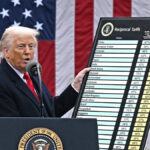

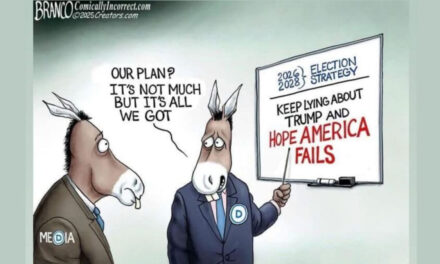





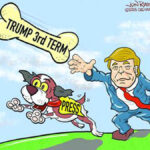
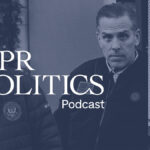

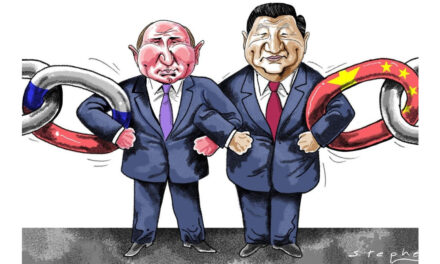





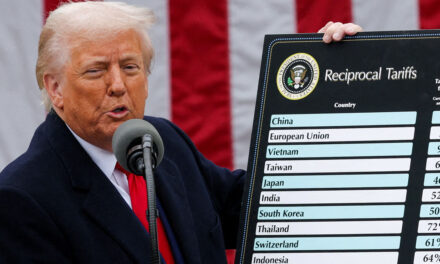





At last Larry has been heard from with "Leave a Reply". We know Larry is the author of the Reply…
Trump is probably the most fit President we have had in the White House for a President at any age.…
Cognitive and physical health. OMG. Elections have consequences. It’s proven that Trump is smarter than Frank Dunger. Any in agreement?…
He said, she said so who are we going to believe. Larry you cast a very dim light on the…
You asswipes aren’t good enough to give Trump a rim job. But speaking of Trump, he passed his physical examination…